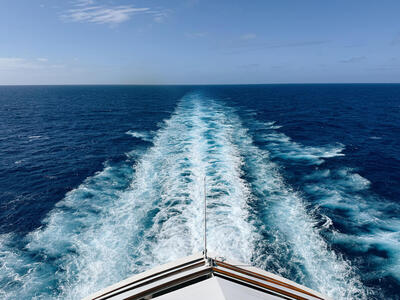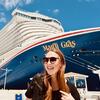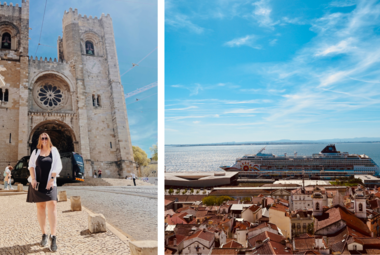Have you ever wondered how you've traveled from Point A to Point B so fast while on your cruise vacation?
You are not in your typical vehicle weaving through cars on the highway; there isn’t any traffic; and you aren’t stressing about getting to your destination at a certain time.
It is crucial to remind yourself that this is a completely different ballpark—you are on a big ship in the middle of the ocean where you are not in a rush! Your hands are not on 10 and 2, and there's no need to slam the breaks. You can simply relax as you glide across the water.
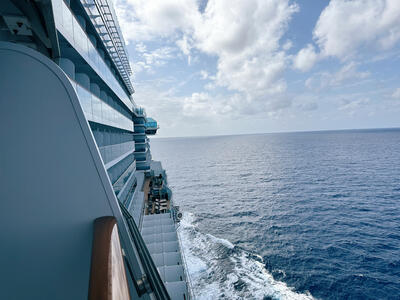
All this to say, you are in an entirely different space, and cruise ships do not sail miles per hour (mph). Instead a cruise ship's speed is measured by "knots."
Keep in mind that nautical miles and knots are the standard units of measurement for maritime navigation for a few reasons. Since there are no roads or landmarks in the middle of the ocean, the drivers of the ship, also known as the Captains, must rely on longitude and latitude.
Nautical miles and knots are the units of measurement because they work along with the Earth’s geometry in open waters. Considering the Earth is round, these units are the most practical for navigating while at sea, meaning that how you equate mph isn't the same as how fast a knot is.
What is a "knot"?
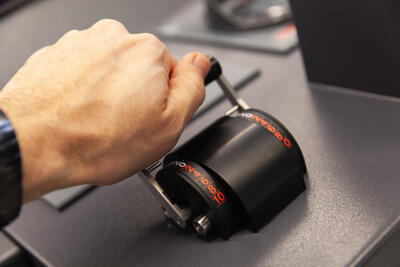
The formal definition of a knot is a form of measurement that equals one nautical mile. This is used to measure the speed of your cruise ship. Of course, this isn’t very helpful unless you also understand what a nautical mile is!
A nautical mile refers to the distance traveled by your cruise ship, which is a bit longer than a land-based mile. This is measured between two points of latitude on the globe. This type of measurement is used because of the Earth’s curvature.
Essentially, knots are used to measure speed, and nautical miles measure distance. One knot is equal to one nautical mile per hour. With a little conversion, one knot is equal to 1.15 land-based miles per hour.

For reference, most cruise ships travel around 20 knots per hour or roughly 23 land-based miles per hour.
However, the above is just an average. The mega-ship Oasis of the Seas has a high speed of 24.5 knots, or 28.2 miles, per hour.
If you're curious about your current speed when onboard, most cruise lines have a channel on their stateroom television that provides this information. It's quite interesting to compare speeds during the day to speeds at night!
Why is the speed measurement in water called a knot?

Back in the 17th century, sailors coined the term "knot" as a measurement of their speed using a device called a “common log.” This was a handy device used on the ship that consisted of a log with a rope and knots at regular intervals. The knots were attached to a piece of wood shaped like a triangle.
History states that sailors would lower the common log, covered in rope with knots, into the sea. The common log would float freely along the vessel for a specific amount of time.
Oftentimes, a sailor onboard the ship would watch the time by using an hourglass. Once the time was finished, the sailors would count the knots between the ship and the piece of wood, and this was used as their speed calculation.
International standard

The common log method might not have been precisely accurate, but it was close enough to give sailors the information they needed for navigation. It was especially innovative for navigation technology in the 17th century before the invention of advanced tools and gadgets!
While different countries use miles or kilometers, there is not a nautical kilometer measurement. The nautical mile is an international standard measurement used around the globe for maritime navigation. However, there was not always international agreement on what to classify as a knot because some countries used miles while others used kilometers.
The nautical mile was officially established in 1929 by the International Hydrographic Organization using nautical miles. Even so, the United Kingdom and the United States had used slightly different measurements. The U.S. officially adopted the international nautical mile in 1954 and the U.K. in 1970.


